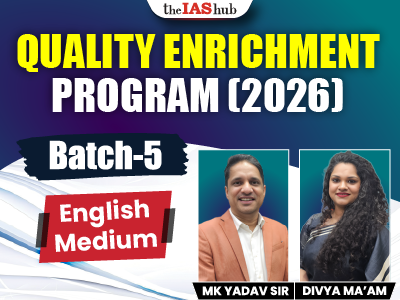The Lok Sabha recently witnessed a heated debate between the Speaker and an MP over adding Sanskrit to the list of languages with simultaneous interpretation in Parliament.
About Language in Parliament: Business shall be conducted in
Hindi or English as per
Article 120.
- Exception: The Chairman or Speaker may allow a member to speak in their mother tongue if they cannot express themselves in Hindi or English.
Historical Context:
- Original Proposal: Hindi and English as the official languages in Parliament, with exceptions for those unable to speak in either.
- Drafting Committee Proposed Change: A member suggested adding Bengali or any regional language as an option along with Hindi and English.
- Concern: The Speaker had discretion to allow regional languages, which might limit members from speaking in their mother tongue.
- Withdrawal: The member withdrew his amendment from consideration.
- Adoption: The Assembly accepted the amendment and adopted Draft Article 99 on 17 September 1949.
- About the official language of the Union is Hindi in Devanagari script, as per Article 343(1) of the Constitution.
- Section 3 of the Official Language Act, 1963 provides for the continuance of English for official purposes of the Union and for use in Parliament.
- The Eighth Schedule of the Constitution enumerates the official languages of India.
About the Official Languages Commission:Established by the President in accordance with Article 344 of the Indian Constitution, was constituted in 1955 via a notification of the Ministry of Home Affairs.
Extended Producer Responsibility (EPR)
The Union Ministry of Environment, Forest and Climate Change (MoEFCC) has recently released a draft notification proposing Extended Producer Responsibility (EPR) for packaging made from paper, glass, and metal, as well as sanitary products.
About EPR: It is a policy that holds producers accountable for the environmental impact of their products throughout their lifecycle, mainly used in waste management.
Historical Context: Paper, glass, and metal waste management was previously under the Solid Waste Management Rules.
- New EPR guidelines introduce responsibility for PIBOs (Producers, Importers, and Brand Owners) for collecting and recycling their packaging waste.
- Aims to reduce landfill burden and promote circularity in resource utilization.
Centre for Science and Environment (CSE) Recommendations for improvement: Align EPR targets with domestic recycling capacities → Expand scope to include writing and printing paper → Ensure ambitious recovery targets (95%) by 2028 → Develop quality standards for raw materials → Integrate informal waste workers into the formal system.
Sectors in India where EPR is applied: e-waste, plastic packaging, batteries, tyres and used oil etc.
National Strategy for Sustainable Tourism
The Ministry of Tourism has recently formulated a National Strategy for Sustainable Tourism.
- About: Sustainable tourism is a way of traveling that considers the economic, social, and environmental impact of tourism.
- Key strategic pillars are: Promoting Environmental Sustainability → Protecting Biodiversity → Promoting Economic Sustainability → Promoting Socio-Cultural Sustainability → Scheme for Certification of Sustainable Tourism → IEC and Capacity Building Governance
- Travel for LiFE Initiative launched to encourage sustainable tourism practices among tourists and tourism businesses → Promote mindful and deliberate actions for sustainable consumption of tourism resources.
- Swadesh Darshan 2.0 (SD2.0) introduced to develop sustainable and responsible destinations with a tourist & destination-centric approach.
- These initiatives aim to ensure tourism contributes positively to the economy → Safeguard the environment and benefit local communities.
About Ministry of Tourism:
- Nodal Agency: Formulates national policies & coordinates tourism development.
- Headed by: Union Minister for Tourism & Ministers of State.
- Administrative Head: Secretary (Tourism).
- Key Functions: Policy & Coordination → Regulation & Standards → Human Resource Development → Publicity & Marketing → Research & International Cooperation → Administrative & Legislative Functions
Semaglutide & Tirzepatide
Recently, a 32-year-old businessman from Agra (105 kg) developed
gastroparesis after self-injecting tirzepatide (bought from Dubai) without medical supervision.
- He took the highest dosage (15 mg) within a month, leading to severe complications and bariatric surgery.
About Gastroparesis & Associated Risks:
- Gastroparesis is the partial paralysis of stomach muscles, leading to delayed digestion.
- Causes include diabetes, tissue disease, neurological disorders, or drug overuse.
- Poses risks during life-saving surgeries due to undigested food in the stomach.
- Semaglutide: Used for weight loss and blood sugar control in type 2 diabetes. It helps reduce major cardiovascular events and chronic kidney disease risks.
- Tirzepatide (Zepbound): Approved for weight loss and weight maintenance.
- Works by reducing appetite and slowing gastric emptying, making one feel full for longer.
- Other Side Effects:Loss of muscle mass in gluteal & facial areas instead of the abdomen → Mental health issues, including suicidal thoughts in some cases → Rebound weight gain after stopping the medication → Long-term effects unknown, as these drugs are not yet available in India.
SHAKTI-based Semiconductor Chip
Recently, IIT Madras & ISRO Inertial Systems Unit (IISU) have jointly developed an Atmanirbhar Aerospace-Grade SHAKTI-based semiconductor chip.
About Semiconductor: It is a material that has electrical conductivity between that of a conductor and an insulator. It is a crucial component in the field of electronics as it
can control the
flow of electrical current.
- They are typically made from materials such as silicon or germanium, which have
- properties that allow them to be easily manipulated for specific electronic purposes.
Project Objective: To promote
indigenous microprocessor-based product development with
RISC-V technology, an
open-source Instruction Set Architecture (ISA), and enhance
security and visibility for users.
Previous SHAKTI Developments: RIMO (2018), MOUSHIK (2020) & New SHAKTI Chip (2024)
About: The SHAKTI class of systems are based on RISC-V, an open-source Instruction Set Architecture (ISA), for designing custom processors. ‘SHAKTI’ is backed by Ministry of Electronics and Information Technology, GOI, under its ‘Digital India RISC-V’ initiative (DIRV).
- It aims to promote indigenous development of microprocessor based products that offer best-in-class security and visibility for users adopting RISC-V technology.
United States Agency for International Development (USAID)
Recently, President Donald Trump announced a 90-day pause on U.S. foreign development assistance for assessment.
- About USAID: Established in 1961 through an Act of Congress.
- Mission: Promote democratic values, economic development, health, education, food security, humanitarian aid, climate change, and governance.
- Major Programs: PEPFAR (HIV/AIDS relief), Feed the Future (Hunger and food security) & Power Africa (Expanding electricity access)
- Water for the World Act: Clean water and sanitation.
- Top USAID recipients: Ukraine, Ethiopia, Jordan, Somalia, Congo, Afghanistan, Nigeria, Syria, Yemen, South Sudan.
- USAID’s role in India: Active since 1951; focus shifted from food aid to infrastructure, economic reforms, and health.
Su-57 E Aircraft
Rosoboronexport, Russia’s state-owned defence exports company has recently offered India the Su-57E fifth-generation fighter aircraft (FGFA) during Aero India 2025.
- About Su-57E Aircraft: Fifth-Generation Fighter, is a stealth, twin-engine multirole fighter, developed by Sukhoi.
- Features: Stealth Technology, equipped with a serrated exhaust nozzle, reducing radar and infrared signatures for enhanced stealth.
- High Weapon Payload: Can carry up to 7.4 tons of air-to-air and air-to-ground missiles.
- Speed: Achieves a maximum speed of Mach 1.8.
- Altitude: Operates at a maximum altitude of 54,100 feet.
- Combat Range: Has a combat range of 1,864 miles, allowing for long-range missions.
- Local Production: Rosoboronexport and United Aircraft Corporation (UAC) propose localizing FGFA production at Hindustan Aeronautics Limited (HAL), potentially starting in 2025.
- Technology Transfer: Russia has offered fifth-generation technologies to India, including Engine technology, Active Electronically Scanned Array (AESA) radars, Optics, AI elements, Software communication, and Air weapons.
Gross Domestic Knowledge Product (GDKP)
Recently, the Ministry of Statistics and Programme Implementation (MoSPI) had a session on “Conceptual Framework of Gross Domestic Knowledge Product (GDKP) Measurement”, chaired by Principal Scientific Advisor.
- About GDKP: It is a proposed metric to measure the contribution of knowledge to economic and social life, supplementing Gross Domestic Product (GDP).
- Revival of GDKP Concept: The government is revisiting the idea of Gross Domestic Knowledge Product (GDKP), which was shelved in 2021, to supplement Gross Domestic Product (GDP) as a metric.
- Objective: Develop a framework to capture the impact of knowledge on economic & social life.
- Focus: Shift from economic indicators to a knowledge-centric measurement approach.
- Significance: A refined methodology for GDKP would better capture contributions from knowledge-driven sectors, innovation, and intellectual assets.
- NITI Aayog’s Proposal: In 2021, NITI Aayog had presented a concept note on GDKP.










